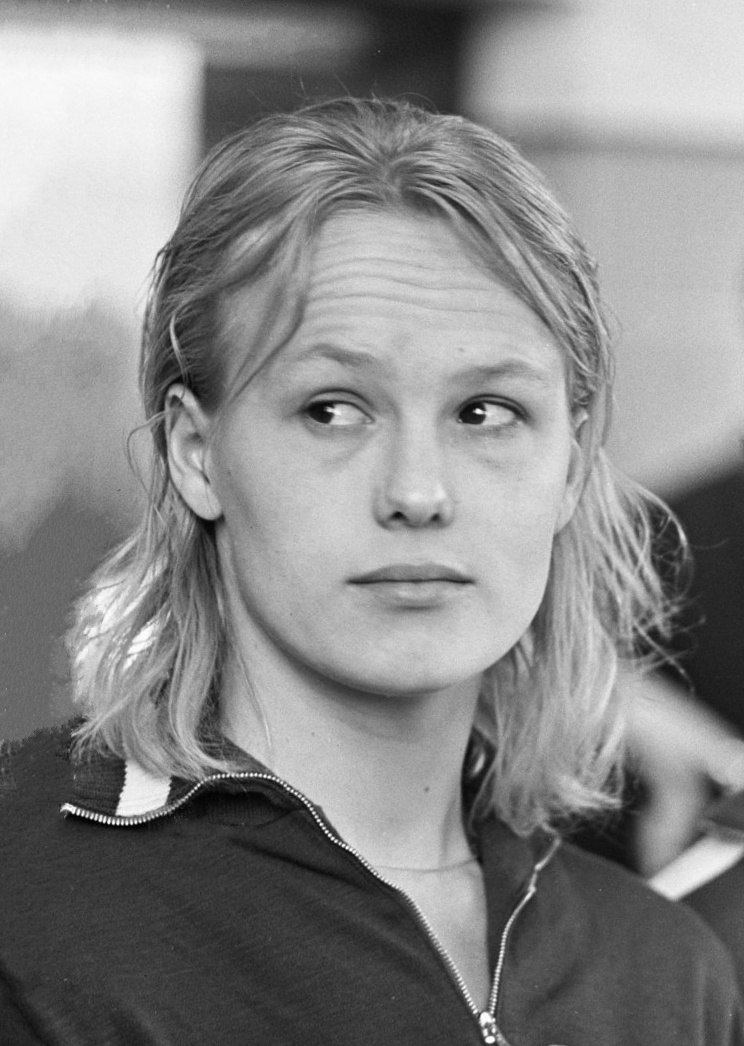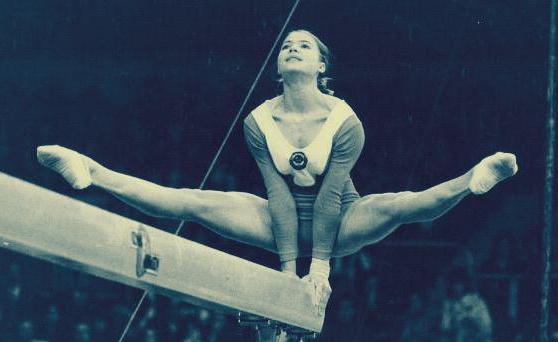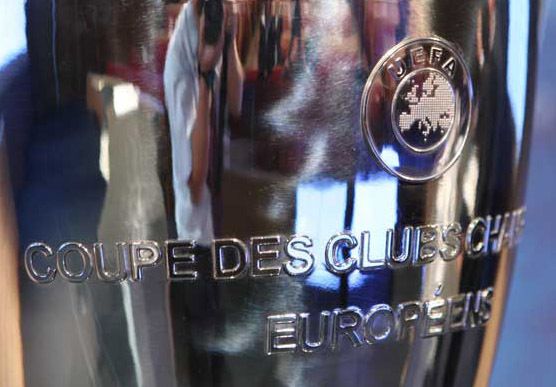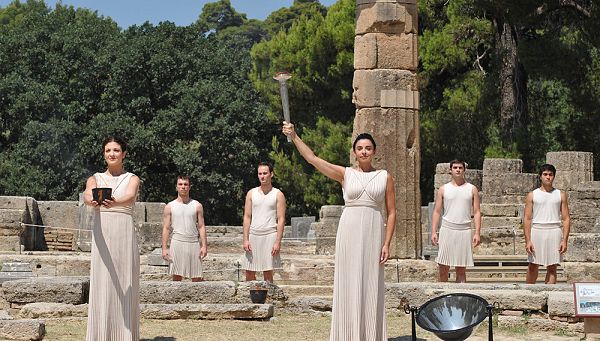Бабанина, Светлана Викторовна. Бабанина светлана викторовна
Бабанина, Светлана Викторовна - Howling Pixel
Светла́на Ви́кторовна Баба́нина (4 февраля 1943, Тамбов) — советская пловчиха, двукратный бронзовый призёр Олимпийских игр. Заслуженный мастер спорта.
| Светлана Бабанина | ||||||||||||||||||||
 | ||||||||||||||||||||
| женский | ||||||||||||||||||||
| Светлана Викторовна Бабанина | ||||||||||||||||||||
| СССР | ||||||||||||||||||||
| плавание | ||||||||||||||||||||
| Спартак (Ташкент) | ||||||||||||||||||||
| 4 февраля 1943 (75 лет) | ||||||||||||||||||||
| Тамбов, СССР | ||||||||||||||||||||
| Кирилл ИнясевскийВиталий Бондаренко | ||||||||||||||||||||
| 173 см | ||||||||||||||||||||
| 62 кг | ||||||||||||||||||||
| Награды и медали
| ||||||||||||||||||||
Карьера
На Олимпиаде в Токио Светлана выиграла бронзовую медаль в плавании на 200 метров брассом, уступив американке Клаудии Колб и своей соотечественнице Галине Прозуменщиковой. В комбинированной эстафете 4×100 метров Бабанина вместе с Татьяной Савельевой, Татьяной Девятовой и Натальей Устиновой завоевала свою вторую бронзу на Играх[1]. На следующих Играх Светлана в плавании на 100 и 200 метров брассом стала 7-й и 6-й соответственно.
Чемпионка и бронзовый призёр Универсиады 1965 года.
Примечания
- ↑ Олимпийские игры 18 Олимпиады — статья из Большой олимпийской энциклопедии (М., 2006)
Ссылки
- Бабанина, Светлана Викторовна — олимпийская статистика на сайте Sports-Reference.com (англ.)
This page is based on a Wikipedia article written by authors (here). Text is available under the CC BY-SA 3.0 license; additional terms may apply. Images, videos and audio are available under their respective licenses.
howlingpixel.com
Бабанина Светлана Викторовна Википедия
В Википедии есть статьи о других людях с фамилией Бабанина.| Светлана Бабанина | ||||||||||||||||||||
| женский | ||||||||||||||||||||
| Светлана Викторовна Бабанина | ||||||||||||||||||||
| СССР | ||||||||||||||||||||
| Спартак (Ташкент) | ||||||||||||||||||||
| 4 февраля 1943(1943-02-04) (75 лет) | ||||||||||||||||||||
| Тамбов, СССР | ||||||||||||||||||||
| Кирилл ИнясевскийВиталий Бондаренко | ||||||||||||||||||||
| 173 см | ||||||||||||||||||||
| 62 кг | ||||||||||||||||||||
| Награды и медали
| ||||||||||||||||||||
Светла́на Ви́кторовна Баба́нина (4 февраля 1943, Тамбов) — советская пловчиха, двукратный бронзовый призёр Олимпийских игр. Заслуженный мастер спорта.
Карьера[ | код]
На Олимпиаде в Токио Светлана выиграла бронзовую медаль в плавании на 200 метров брассом, уступив американке Клаудии Колб и своей соотечественнице Галине Прозуменщиковой. В комбинированной эстафете 4×100 метров Бабанина вместе с Татьяной Савельевой, Татьяной Девятовой и Натальей Устиновой завоевала свою вторую бронзу на Играх[1]. На следующих Играх Светлана в плавании на 100 и 200 метров брассом стала 7-й и 6-й соответственно.
Чемпионка и бронзовый призёр Универсиады 1965 года.
Примечания[ | код]
- ↑ Олимпийские игры 18 Олимпиады — статья из Большой олимпийской энциклопедии (М., 20
ru-wiki.ru
Бабанина, Светлана Викторовна - WikiVisually
1. Союз Советских Социалистических Республик – The Soviet Union, officially the Union of Soviet Socialist Republics was a socialist state in Eurasia that existed from 1922 to 1991. It was nominally a union of national republics, but its government. The Soviet Union had its roots in the October Revolution of 1917 and this established the Russian Socialist Federative Soviet Republic and started the Russian Civil War between the revolutionary Reds and the counter-revolutionary Whites. In 1922, the communists were victorious, forming the Soviet Union with the unification of the Russian, Transcaucasian, Ukrainian, following Lenins death in 1924, a collective leadership and a brief power struggle, Joseph Stalin came to power in the mid-1920s. Stalin suppressed all opposition to his rule, committed the state ideology to Marxism–Leninism. As a result, the country underwent a period of rapid industrialization and collectivization which laid the foundation for its victory in World War II and postwar dominance of Eastern Europe. Shortly before World War II, Stalin signed the Molotov–Ribbentrop Pact agreeing to non-aggression with Nazi Germany, in June 1941, the Germans invaded the Soviet Union, opening the largest and bloodiest theater of war in history. Soviet war casualties accounted for the highest proportion of the conflict in the effort of acquiring the upper hand over Axis forces at battles such as Stalingrad. Soviet forces eventually captured Berlin in 1945, the territory overtaken by the Red Army became satellite states of the Eastern Bloc. The Cold War emerged by 1947 as the Soviet bloc confronted the Western states that united in the North Atlantic Treaty Organization in 1949. Following Stalins death in 1953, a period of political and economic liberalization, known as de-Stalinization and Khrushchevs Thaw, the country developed rapidly, as millions of peasants were moved into industrialized cities. The USSR took a lead in the Space Race with Sputnik 1, the first ever satellite, and Vostok 1. In the 1970s, there was a brief détente of relations with the United States, the war drained economic resources and was matched by an escalation of American military aid to Mujahideen fighters. In the mid-1980s, the last Soviet leader, Mikhail Gorbachev, sought to reform and liberalize the economy through his policies of glasnost. The goal was to preserve the Communist Party while reversing the economic stagnation, the Cold War ended during his tenure, and in 1989 Soviet satellite countries in Eastern Europe overthrew their respective communist regimes. This led to the rise of strong nationalist and separatist movements inside the USSR as well, in August 1991, a coup détat was attempted by Communist Party hardliners. It failed, with Russian President Boris Yeltsin playing a role in facing down the coup. On 25 December 1991, Gorbachev resigned and the twelve constituent republics emerged from the dissolution of the Soviet Union as independent post-Soviet states
2. Плавание – Swimming is an individual or team sport that involves using arms and legs to move the body through water. Typically, the takes place in pools or in open-water. Competitive swimming is one of the most popular Olympic sports, with events in butterfly, backstroke, breaststroke, freestyle, in addition to these individual events, swimmers also take part in relays. Swimming each stroke requires specific techniques, and in competition, there are specific regulations concerning the form for different strokes. There are also put in place to regulate what types of swimsuits are allowed at competitions. Although it is possible for competitive swimmers to incur several injuries from the sport, evidence of recreational swimming in prehistoric times has been found, with the earliest evidence dating to Stone Age paintings from around 10000 years ago. Written references date from 2000 BC, with some of the earliest references to swimming including the Iliad, the Odyssey, the Bible, Beowulf, the Quran and others. In 1538, Nikolaus Wynmann, a German professor of languages, wrote the first swimming book, Swimming emerged as a competitive recreational activity in the 1830s in England. In 1828, the first indoor swimming pool, St Georges Baths was opened to the public, by 1837, the National Swimming Society was holding regular swimming competitions in six artificial swimming pools, built around London. In 1844 two Native American participants at a competition in London introduced the front crawl to a European audience. Sir John Arthur Trudgen picked up the stroke from some South American natives and successfully debuted the new stroke in 1873. His stroke is still regarded as the most powerful to use today, captain Matthew Webb was the first man to swim the English Channel, in 1875. Using the breaststroke technique, he swam the channel 21.26 miles in 21 hours and 45 minutes and his feat was not replicated or surpassed for the next 36 years, until T. W. Burgess made the crossing in 1911. Other European countries also established swimming federations, Germany in 1882, France in 1890, the first European amateur swimming competitions were in 1889 in Vienna. The worlds first womens swimming championship was held in Scotland in 1892, mens swimming became part of the first modern Olympic Games in 1896 in Athens. In 1902, the Australian Richmond Cavill introduced the front crawl to the Western world, in 1908, the world swimming association, Fédération Internationale de Natation, was formed. Womens swimming was introduced into the Olympics in 1912, the first international tournament for women outside the Olympics was the 1922 Womens Olympiad, Butterfly was developed in the 1930s and was at first a variant of breaststroke, until it was accepted as a separate style in 1952. Competitive swimming became popular in the 19th century, the goal of competitive swimming is to break personal or world records while beating competitors in any given event
3. Спартак (спортивное общество) – Spartak is an international fitness and sports society that unites some countries of the former Soviet Union. It was founded in 1921 in Moscow as the Moscow Sports Circle by footballer Nikolai Starostin, in 1926 it came under the sponsorship of the food workers union. In 1934, it adopted the name of Spartak, after the ancient Roman slave, rebel and athlete Spartacus and it was dissolved in 1987 and reformed in 1991 as an international society among six nations of the former Soviet Union. Spartak was the first and the largest All-Union Voluntary Sports Society of workers of state trade, producers cooperation, light industry, civil aviation, education, culture, in 1936 Spartak organized and successfully conducted a sports parade at the Moscows Red Square. In 1960 the society was reorganized into the Voluntary Sport Society, there were 23,000 physical culture collectives in the society in 1975, that united 6.2 million people. There were 40 sports disciplines cultivated in the society in 1975, the society possessed 238 stadiums,89 swimming pools,1,800 sports halls,1,300 football grounds,2,600 sports camps,264 Children and Youth Sport Schools. In 1987 Spartak was abolished and all its assets were transferred back to trade unions, in 1991 the society was reorganized as an international. Currently the society has affiliation in six countries of the former Soviet Union, Russia, Ukraine, Belarus, Nikolai Starostin Semyon Privis Gennadiy Mikhalchuk Pyotr Sobolev Yevgeniy Arkhipov Vladimir Vekshin Nikolai Ozerov Anna Alyoshina VSS Spartak was awarded Order of Lenin
4. Тамбов – Tambov is a city and the administrative center of Tambov Oblast, Russia, located at the confluence of the Tsna and Studenets Rivers, about 480 kilometers south-southeast of Moscow. The name Tambov originates from the Moksha language word томба meaning abyss, Tambov was founded by the decree of Tsar Mikhail Fyodorovich on April 17,1636. Originally, it was a fortress against attacks by the Crimean Tatars. It then became the administrative and trade center. Roman Boborykin, the emperors court menial and voivode was the towns first builder, thanks to his experience, the fortress had been completed rapidly. Tambov was granted city status in 1719, in 1779, Tambov Viceroyalty was formed, and on August 16,1781, Empress Catherine the Great approved the citys coat of arms depicting a beehive, symbolizing the towns hardworking residents. This viceyorality was formed from parts of Ryazan Viceyorality and northern parts of Voronezh Viceyorality. In March 1786, the disgraced Russian poet and statesman Gavrila Derzhavin was appointed the governor of Tambov Governorate—a post that he held until December 1788. Even during that tenure he accomplished a great deal, a theater, a college, a dancing school, a printing business, an orchestra. Tambov later erected a monument to Derzhavin, in November 1830, during the Cholera Riots in Russia, the citizens of Tambov attacked their governor, but they were soon suppressed by the regular army. Later in the 19th century Tambov became a significant cultural center that supported a number of schools, libraries. By 1897, its population was more than 50,000 people, during the Civil War, in 1920–1921, the region witnessed the Tambov Rebellion—a bitter struggle between local residents and the Bolshevik Red Army. In 1921, a Tambov Republic was established, but it was crushed by the Red Army under the command of Mikhail Tukhachevsky. Between 1928 and 1934, Tambov became okrug center in Central Black Earth Oblast, the oblast had present form after separation of Penza Oblast on 4 February 1939. During and after World War II, most of the Malgré-nous from Alsace-Moselle were jailed in Camp #188 at Tambov, between 4,000 and 10,000 French people died in this camp. In 1991, a 360-meter high guyed television antenna was built in Tambov, as an administrative division, it is incorporated as the city of oblast significance of Tambov—an administrative unit with the status equal to that of the districts. As a municipal division, the city of oblast significance of Tambov is incorporated as Tambov Urban Okrug, the city is a large industrial center and is served by Tambov Donskoye Airport. Tambov is also the location of the Tambov air base of the Russian Air Force, a railway connection between Tambov and Moscow was first established in 1871
wikivisually.com
WikiZero - Бабанина, Светлана Викторовна
Open wikipedia design.
В Википедии есть статьи о других людях с фамилией Бабанина.| Светлана Бабанина | ||||||||||||||||||||
| женский | ||||||||||||||||||||
| Светлана Викторовна Бабанина | ||||||||||||||||||||
| СССР | ||||||||||||||||||||
| плавание | ||||||||||||||||||||
| Спартак (Ташкент) | ||||||||||||||||||||
| 4 февраля 1943(1943-02-04) (75 лет) | ||||||||||||||||||||
| Тамбов, СССР | ||||||||||||||||||||
| Кирилл ИнясевскийВиталий Бондаренко | ||||||||||||||||||||
| 173 см | ||||||||||||||||||||
| 62 кг | ||||||||||||||||||||
| Награды и медали
| ||||||||||||||||||||
Светла́на Ви́кторовна Баба́нина (4 февраля 1943, Тамбов) — советская пловчиха, двукратный бронзовый призёр Олимпийских игр. Заслуженный мастер спорта.
На Олимпиаде в Токио Светлана выиграла бронзовую медаль в плавании на 200 метров брассом, уступив американке Клаудии Колб и своей соотечественнице Галине Прозуменщиковой. В комбинированной эстафете 4×100 метров Бабанина вместе с Татьяной Савельевой, Татьяной Девятовой и Натальей Устиновой завоевала свою вторую бронзу на Играх[1]. На следующих Играх Светлана в плавании на 100 и 200 метров брассом стала 7-й и 6-й соответственно.
Чемпионка и бронзовый призёр Универсиады 1965 года.
www.wikizero.com
Бабанина, Светлана Викторовна - Википедия
В Википедии есть статьи о других людях с фамилией Бабанина.| Светлана Бабанина | ||||||||||||||||||||
| женский пол | ||||||||||||||||||||
| Светлана Викторовна Бабанина | ||||||||||||||||||||
| СССР | ||||||||||||||||||||
| плавание | ||||||||||||||||||||
| Спартак (Ташкент) | ||||||||||||||||||||
| 4 февраля 1943(1943-02-04) (74 года) | ||||||||||||||||||||
| Тамбов, СССР | ||||||||||||||||||||
| Кирилл ИнясевскийВиталий Бондаренко | ||||||||||||||||||||
| 173 см | ||||||||||||||||||||
| 62 кг | ||||||||||||||||||||
| Награды и медали
| ||||||||||||||||||||
Светла́на Ви́кторовна Баба́нина (4 февраля 1943, Тамбов) — советская пловчиха, двукратный бронзовый призёр Олимпийских игр. Заслуженный мастер спорта.
Карьера[ | ]
На Олимпиаде в Токио Светлана выиграла бронзовую медаль в , уступив американке и своей соотечественнице Галине Прозуменщиковой. В Бабанина вместе с Татьяной Савельевой, Татьяной Девятовой и Натальей Устиновой завоевала свою вторую бронзу на Играх[1]. На следующих Играх Светлана в плавании на 100 и 200 метров брассом стала 7-й и 6-й соответственно.
Чемпионка и бронзовый призёр Универсиады 1965 года.
Примечания[ | ]
- ↑ Олимпийские игры 18 Олимпиады — статья из Большой олимпийской энциклопедии (М., 2006)
Ссылки[ | ]
- Бабанина, Светлана Викторовна — олимпийская статистика на сайте Sports-Reference.com (англ.)
encyclopaedia.bid
Светлана Бабанина Википедия
В Википедии есть статьи о других людях с фамилией Бабанина.| Светлана Бабанина | ||||||||||||||||||||
| женский | ||||||||||||||||||||
| Светлана Викторовна Бабанина | ||||||||||||||||||||
| СССР | ||||||||||||||||||||
| плавание | ||||||||||||||||||||
| Спартак (Ташкент) | ||||||||||||||||||||
| 4 февраля 1943(1943-02-04) (75 лет) | ||||||||||||||||||||
| Тамбов, СССР | ||||||||||||||||||||
| Кирилл ИнясевскийВиталий Бондаренко | ||||||||||||||||||||
| 173 см | ||||||||||||||||||||
| 62 кг | ||||||||||||||||||||
| Награды и медали
| ||||||||||||||||||||
Светла́на Ви́кторовна Баба́нина (4 февраля 1943, Тамбов) — советская пловчиха, двукратный бронзовый призёр Олимпийских игр. Заслуженный мастер спорта.
Карьера
На Олимпиаде в Токио Светлана выиграла бронзовую медаль в плавании на 200 метров брассом, уступив американке Клаудии Колб и своей соотечественнице Галине Прозуменщиковой. В комбинированной эстафете 4×100 метров Бабанина вместе с Татьяной Савельевой, Татьяной Девятовой и Натальей Устиновой завоевала свою вторую бронзу на Играх[1]. На следующих Играх Светлана в плавании на 100 и 200 метров брассом стала 7-й и 6-й соответственно.
Чемпионка и бронзовый призёр Универсиады 1965 года.
Примечания
- ↑ Олимпийские игры 18 Олимпиады — статья из Большой олимпийской энциклопедии (М., 2006)
Ссылки
- Бабанина, Светлана Викторовна — олимпийская статистика на сайте Sports-Reference.com (англ.)
wikiredia.ru
Светлана Викторовна Бабанина Википедия
В Википедии есть статьи о других людях с фамилией Бабанина.| Светлана Бабанина | ||||||||||||||||||||
| женский | ||||||||||||||||||||
| Светлана Викторовна Бабанина | ||||||||||||||||||||
| СССР | ||||||||||||||||||||
| плавание | ||||||||||||||||||||
| Спартак (Ташкент) | ||||||||||||||||||||
| 4 февраля 1943(1943-02-04) (75 лет) | ||||||||||||||||||||
| Тамбов, СССР | ||||||||||||||||||||
| Кирилл ИнясевскийВиталий Бондаренко | ||||||||||||||||||||
| 173 см | ||||||||||||||||||||
| 62 кг | ||||||||||||||||||||
| Награды и медали
| ||||||||||||||||||||
Светла́на Ви́кторовна Баба́нина (4 февраля 1943, Тамбов) — советская пловчиха, двукратный бронзовый призёр Олимпийских игр. Заслуженный мастер спорта.
Карьера
На Олимпиаде в Токио Светлана выиграла бронзовую медаль в плавании на 200 метров брассом, уступив американке Клаудии Колб и своей соотечественнице Галине Прозуменщиковой. В комбинированной эстафете 4×100 метров Бабанина вместе с Татьяной Савельевой, Татьяной Девятовой и Натальей Устиновой завоевала свою вторую бронзу на Играх[1]. На следующих Играх Светлана в плавании на 100 и 200 метров брассом стала 7-й и 6-й соответственно.
Чемпионка и бронзовый призёр Универсиады 1965 года.
Примечания
- ↑ Олимпийские игры 18 Олимпиады — статья из Большой олимпийской энциклопедии (М., 2006)
Ссылки
- Бабанина, Светлана Викторовна — олимпийская статистика на сайте Sports-Reference.com (англ.)
wikiredia.ru






